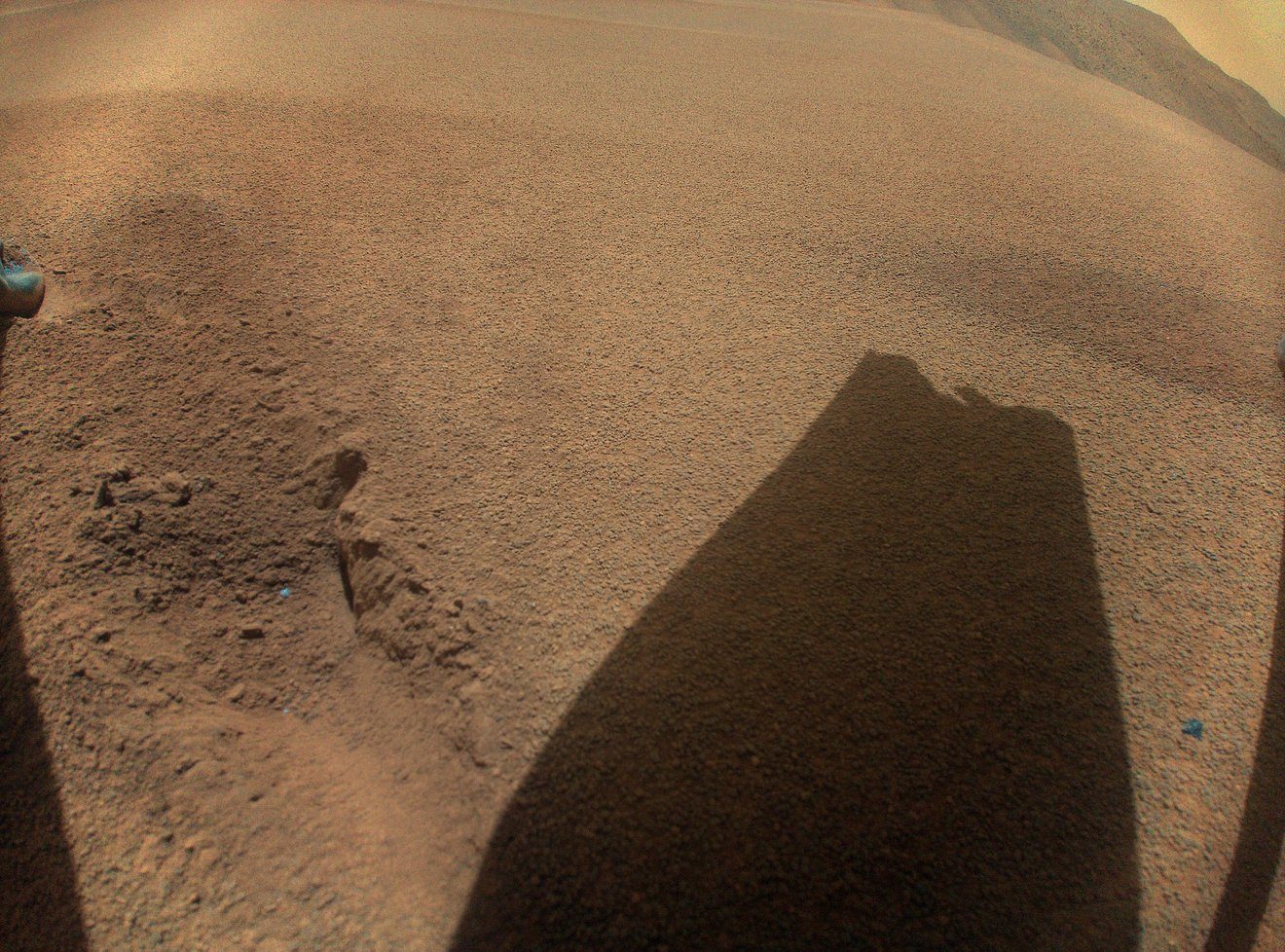Mars helicopter Ingenuity's final resting place named after 'Undying Lands' in 'Lord of the Rings'

Like some hobbits, a wee Martian helicopter received a special honor.
The final resting place of NASA's Ingenuity, grounded after its last flight on Jan. 18, now has a new name bestowed from fans of fantasy.
"The Ingenuity team has nicknamed the spot where the helicopter completed its final flight 'Valinor Hills' after the fictional location in J.R.R. Tolkien's fantasy novels, which include 'The Lord of the Rings' trilogy," NASA officials wrote on Monday (Feb. 6).
Related: NASA to 'wiggle' broken Ingenuity Mars helicopter's blades to analyze damage
Tolkien (1892-1973), an Anglo-Saxon scholar at the University of Oxford, is best known for his fantasy works that include "Lord of the Rings" (LOTR), "The Hobbit" and "The Silmarillion."
Several of Tolkien's stories have been turned into tales for radio, television, streaming and Hollywood, such as the LOTR and "The Hobbit" movie series directed by Peter Jackson in the 2000s and 2010s, and "The Lord of the Rings: The Rings of Power" Amazon Prime series from 2022.
Valinor was a part of the Undying Lands, a location cited often in Tolkien's mythology. The most-cited reference to those islands comes at the end of LOTR. The elves granted some of the main characters refuge there, after the invitees played key roles in a quest to destroy a powerful finger-ring threatening the universe.
Breaking space news, the latest updates on rocket launches, skywatching events and more!
The islands of the Undying Lands were the home of the elves and also the Valar, the latter referring to beings who played a role in creating the world, according to a 2009 paper in the peer-reviewed journal "Mythlore " led by Keith Kelly, of Pennsylvania's Kutztown University. While not quite equivalent to the Judeo-Christian concepts of heaven, according to Tolkien's letters cited in the paper, the Undying Lands are a point of eternal refuge and rest.
The informal name for the location (used by NASA engineers for navigation and honorific purposes) is apt for Ingenuity, which made 72 flights since alighting on the surface of Mars with its robotic companion, the Perseverance rover, on Feb. 18, 2021.
After making the first flight of a powered aircraft on a planet other than Earth, Ingenuity's adventures extended quickly from its five-flight scope to acting as a scout for future Perseverance sampling locations to enhance the mission's ongoing search for ancient Red Planet life.
The last sojourn was cut short on Jan. 18 due to a difficult stretch of Martian sands described as "bland", so much so that it was difficult for the helicopter to judge landscape features such as rocks for navigation.
The helicopter's flying days are over after engineers spotted damage to the blades, making it incapable of flying again. As Ingenuity is otherwise in good health, however, it can still transmit engineering data to Perseverance so long as the rover remains within range.
Perseverance, however, will continue to prioritize its mission of collecting samples for a possible Mars sample return mission (MSR) in the 2030s. That means that sooner or later, the rover will move away from the grounded Ingenuity and leave the flying sentinel silent, marking the end of the drone's mission.
NASA does plan to continue deploying flying sentinels on future missions, including two fetch helicopters on the MSR mission plan. But that's assuming that ongoing budgetary woes for the program can be overcome quickly. NASA's Jet Propulsion Laboratory, which manages Ingenuity and MSR, slashed 8% of its workforce this week due to Congressional uncertainty about NASA's budget and MSR.
NASA is operating under a continuing resolution that freezes spending at 2023 budgetary limits until the spending for the new fiscal year can be negotiated. "The impacts will occur across both technical and support areas of the Lab," JPL officials said in a recent statement. "These are painful but necessary adjustments that will enable us to adhere to our budget allocation while continuing our important work for NASA and our nation."

Elizabeth Howell (she/her), Ph.D., was a staff writer in the spaceflight channel between 2022 and 2024 specializing in Canadian space news. She was contributing writer for Space.com for 10 years from 2012 to 2024. Elizabeth's reporting includes multiple exclusives with the White House, leading world coverage about a lost-and-found space tomato on the International Space Station, witnessing five human spaceflight launches on two continents, flying parabolic, working inside a spacesuit, and participating in a simulated Mars mission. Her latest book, "Why Am I Taller?" (ECW Press, 2022) is co-written with astronaut Dave Williams.



